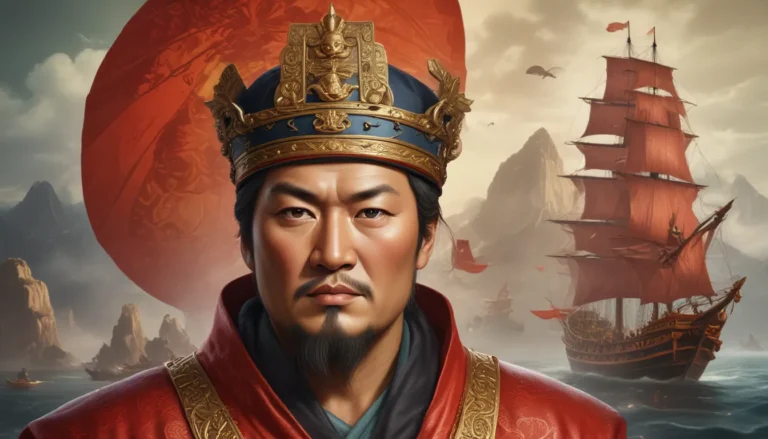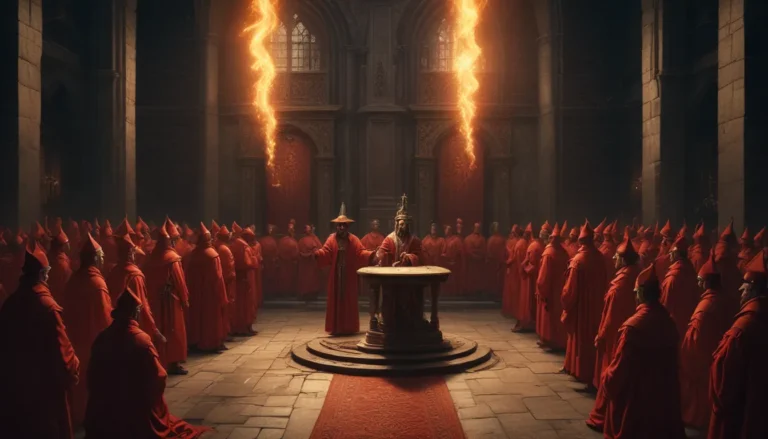The images in our articles may not match the content exactly. They are used to grab your attention, not to show the exact details in the text. The images complement the text but do not replace it.
During World War II, thousands of women and girls from various Asian countries were forced into sexual slavery by the Japanese military, an atrocity that has left a long-lasting impact on history. Delving into the dark chapter of comfort women sheds light on the resilience of the human spirit and emphasizes the importance of understanding and acknowledging past atrocities to prevent their recurrence. In this article, we will uncover 20 key facts about comfort women, offering a glimpse into their suffering, the historical context, and the ongoing quest for justice and recognition.
Unraveling the Term “Comfort Women”
The term “comfort women” refers to women and girls who were coerced into sexual slavery by the Imperial Japanese Army in occupied territories before and during World War II. This system extended across Asia as the Japanese empire expanded its reach, ensnaring victims from countries such as Korea, China, the Philippines, and others. Here are some key insights into the term:
- Historical Context: The system of comfort women was established in the early 1930s and grew as Japan’s influence spread across Asia.
- Victim Numbers: While estimates suggest that up to 200,000 women were impacted by this system, exact figures remain a subject of debate among historians.
Peering into the Life of a Comfort Woman
The life of a comfort woman was marked by unimaginable hardship, enduring physical and psychological trauma on a daily basis within comfort stations.
- Daily Suffering: Survivors have shared harrowing accounts of enduring brutal conditions, including being subjected to rape by numerous soldiers each day.
- Health Consequences: Many survivors faced severe physical injuries, sexually transmitted diseases, and long-term psychological trauma as a result of their ordeal.
Unveiling the Aftermath and Recognition
The plight of comfort women remained largely overlooked until survivors began to speak out in the late 20th century, demanding recognition and reparations for the injustices they suffered.
- Public Acknowledgment: In 1993, the Japanese government issued the Kono Statement, acknowledging the military’s involvement in establishing and maintaining the comfort stations.
- Ongoing Struggles: Despite some apologies and compensatory actions by Japan, many survivors and advocates continue to seek further acknowledgment and reparations for the atrocities committed.
Insight into Global Awareness and Education
Efforts to educate the public about the history of comfort women have increased, with memorials and museums established in various countries to commemorate their suffering.
- Memorials Worldwide: Statues and memorials dedicated to comfort women serve as poignant reminders of their plight, erected in countries like South Korea, the United States, and Australia.
- Educational Initiatives: Textbooks and educational programs now include chapters on comfort women, ensuring that future generations learn about this aspect of World War II history.
Unraveling Legal and Diplomatic Efforts
Survivors and their supporters have engaged in legal and diplomatic endeavors to seek justice and reparations from the Japanese government.
- Lawsuits Filed: Former comfort women have filed lawsuits against the Japanese government, seeking apologies and compensation for the suffering they endured.
- International Support: The issue has garnered attention from international bodies, such as the United Nations, which have called on Japan to take comprehensive measures to address the grievances of the survivors.
Delving into the Role of Activism
Activism plays a pivotal role in keeping the issue of comfort women in the public eye, urging governments to take action and provide justice for survivors.
- Grassroots Movements: Activists and organizations worldwide hold demonstrations, educational events, and campaigns to support survivors and demand justice.
- Artistic Expression: Artists express the stories of comfort women through various mediums like films, books, and plays, helping raise awareness and empathy for their experiences.
Contemplating the Debate Over Terminology
The terminology surrounding comfort women is a subject of controversy, with some arguing that the term “comfort women” euphemizes the reality of sexual slavery.
- Alternative Terms: Critics suggest using terms like “sex slaves” or “victims of military sexual slavery” to more accurately depict the experiences of these women.
- Impact of Language: The language used to discuss historical injustices significantly influences public perception and the pursuit of justice for survivors.
Emphasizing the Importance of Remembrance
Remembering the history of comfort women is essential for honoring survivors, educating the public, and preventing similar atrocities from occurring in the future.
- Annual Commemorations: Events on August 14th, the International Day of Remembrance for Comfort Women, honor the memory of these women.
- Survivors’ Testimonies: The testimonies of comfort women survivors provide crucial historical accounts of their experiences and the atrocities they faced.
Contemplating Challenges in Reconciliation
Efforts to achieve reconciliation between Japan and affected countries have encountered challenges due to diplomatic tensions and revisionist histories.
- Diplomatic Tensions: The issue of comfort women has strained Japan’s relations with countries like South Korea, complicating reconciliation efforts.
- Revisionist Histories: Attempts to downplay or deny the history of comfort women by some political figures and groups in Japan have hindered healing processes and caused outrage.
Reflecting on the Legacy of Comfort Women
The legacy of comfort women continues to shape discussions on women’s rights, historical memory, and international relations, influencing global conversations on human rights and war atrocities.
- Influence on Women’s Rights: The comfort women issue symbolizes the fight against sexual violence and advocates for women’s rights on a global scale.
- Lessons for Humanity: Their history serves as a stark reminder of the horrors of war and underscores the importance of protecting human rights to prevent such atrocities from recurring.
Concluding Thoughts on History’s Shadows
Exploring the stories of comfort women provides a poignant reminder of the human cost of war and the imperative of preserving memory to prevent future atrocities. Remembering their suffering is a step toward advocating for justice and human rights worldwide, embodying a powerful call to action against violence and oppression. Their voices, once silenced, now resonate as a beacon of courage and resilience, guiding us towards a future where such injustices find no place. Let us carry forward the lessons learned from their experiences, shaping a world where the echoes of their stories inspire compassion, justice, and lasting change.
Your Feedback Matters
Our commitment to providing reliable and engaging content is paramount, with each fact contributed by users like you, ensuring a diverse wealth of insights and information. Our dedicated editors rigorously review each submission to uphold the highest standards of accuracy and authenticity, guaranteeing that the facts we share are not only captivating but also credible. Trust our unwavering dedication to quality and authenticity as you embark on a journey of exploration and learning with us.






